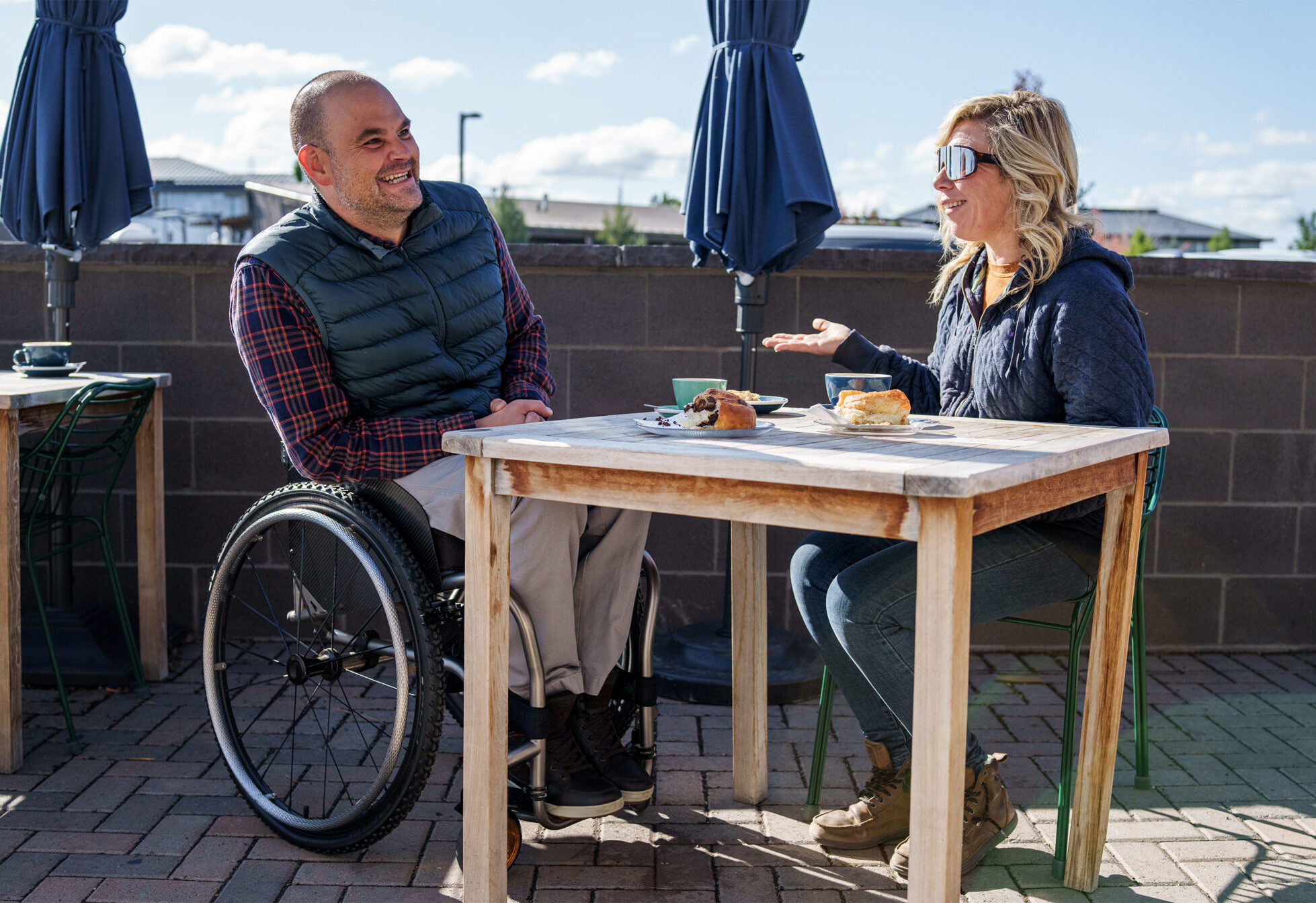- Does the Americans with Disabilities Act require buildings to install elevators?
- What does “equal access” mean when you can’t access half the building and the best bar is on the rooftop?
- Our ADA expert Marsha Mazz is here to explain and give helpful advice.
Q: Our town has a wonderful restaurant that is also home to local art galleries.
This restaurant has a rooftop bar and cafe that hosts artisan fairs. A few years back, the restaurant was sued because its ground floor, including the restroom, wasn’t accessible. Improvements were made, but some ground-floor artist galleries remain inaccessible, all of the second-floor shops are up a flight of stairs, and there is no way to access the rooftop. Shouldn’t they install an elevator under the Americans with Disabilities Act? With the right changes, this business could be a welcoming space for all.
A: I reviewed the lawsuit you referred to.
Unfortunately, the ADA exempts privately owned buildings from providing elevator service to all two-story buildings and to three-story buildings with less than 3,000 square feet per story.
Your local hangout was constructed in 2015 after the effective date of the 2010 ADA Standards. Although it used materials recycled from the building that was there previously, it seems to be new construction and not eligible for any exceptions for altered, pre-ADA buildings. It has a restaurant and an open courtyard on the first floor. The restaurant alone seats 200 people, making that story larger than 3,000 square feet. But from the photos and sketches online, it may not be considered a three-story building! It could be a two-story building with a mezzanine above the gift shop. Unfortunately, that would most likely mean no elevator.
The International Building Code contains the accessibility requirements currently used in Pennsylvania. The IBC’s treatment of two-story buildings differs from the ADA and requires elevators more frequently. The building was probably constructed under the 2009 International Building Code, which did not require elevator access to occupied roofs because a roof isn’t technically a “story.” If the restaurant was constructed under the current edition of the IBC (2024), an elevator would be required if the occupied roof is 3,000 square feet or more – which is likely.
You are entitled to everything rooftop patrons receive
Going forward, I would strongly recommend the community push hard for equal access. For example, I noticed an entirely different menu for the rooftop. If prices are different, e.g., a happy hour that doesn’t exist downstairs, I’d make it a point to insist on the lower price. Also, you don’t need reservations for the rooftop, but you do need them for the restaurant and courtyard. If they serve food on the rooftop that isn’t available downstairs, insist on being served that food.
I don’t know how we would access events on the rooftop. However, if any of these events are sponsored by the state or local government, they must be accessible. It looks like some studios are up a flight of stairs, but I couldn’t find any with just one step in photos – one step is likely a building code violation. Finally, I saw no accessibility statement on the restaurant’s website. We could push them to have one so that people don’t go there expecting access and being disappointed.
I wish I had better news. This place looks amazing and would be a fun place to visit if it weren’t inaccessible.


